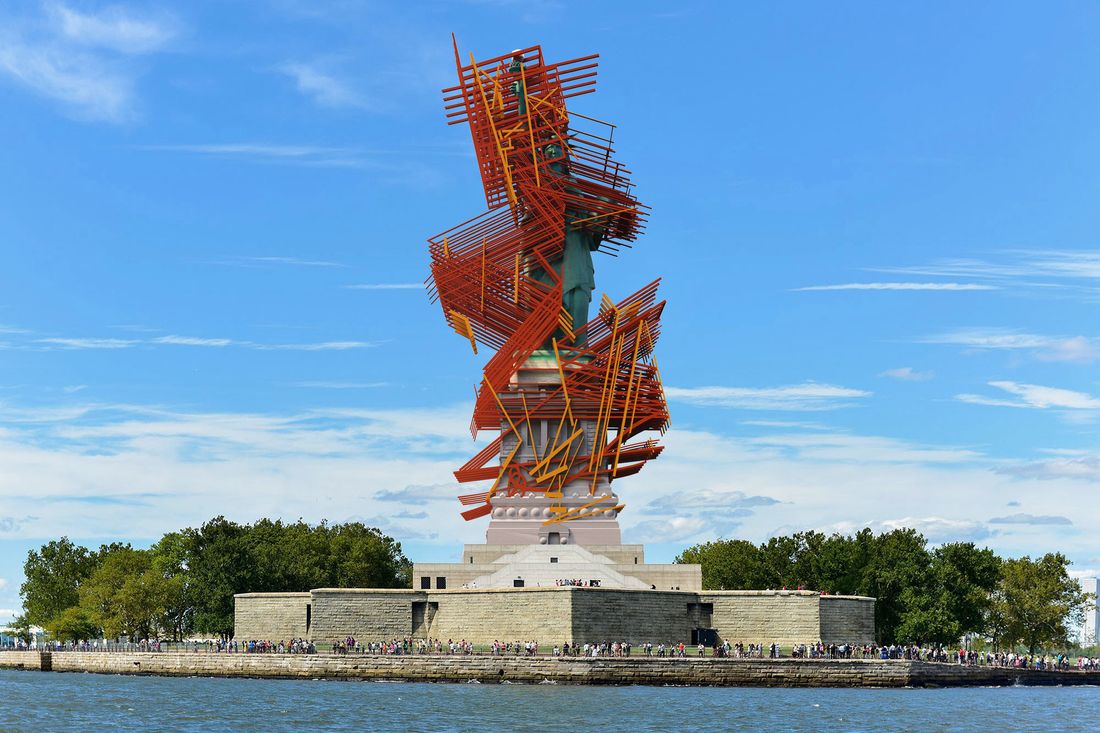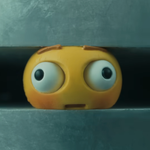
A year after New York City went into lockdown, COVID-19 has claimed the lives of more than 30,000 of its residents. The tragedy’s scale has made it difficult to comprehend the private griefs so many of us have experienced: the million heartbreaks of lost friends, lost livelihoods, lost neighborhood fixtures, lost senses of belonging. Instead of proposing a grand permanent memorial, we asked a wide range of New Yorkers about the moments from the pandemic that stood out to them and how they would want those experiences to be commemorated. In response, a selection of architects and artists translated those clients’ memories into proposals for temporary installations. We imposed no budget limit and no restrictions: The result could be a sculpture, a mural, a pavilion, a song — anything that could become part of the streetscape for a while. Presented here is one of 15 concepts submitted by architects, designers, artists, and composers; the rest will appear over the course of this week.
Client: Rose
Nurse at a Manhattan nursing home
Rose: Before COVID, things were good. We would come in and sit with residents, some days they were watching a movie, they were talking, singing. That was taken away from them. Now they stay in their rooms, they eat there, they don’t even come outside. Some of them will ask, “Is this person still alive?” Every day, before I leave my house, I pray that everything will be all right. When I get home, I rush to the shower to scrub myself. I can’t hug or kiss my daughter. I stay in a separate room. There was a moment in August when my baby had a 101-degree fever. My babysitter, she kept my baby alive. When I took her to the hospital, I had to tell them I work with COVID patients, and they took her away from me. She had to stay in the hospital for two days and they would set up a video chat so I could see my baby. I lost a lot of months away from my baby.
What I remember most is the bodies. So many dead bodies. We didn’t have any place to put them. The morgue was full. There was a woman, one day she tested positive and the next day she died. This was someone who didn’t take any medication. She was like 55. She only ate fish, salad, and organic tea. When she died, I said, “Okay, I think I’m going to quit.” We’re always holding their hands and talking to them, telling them, “It’s going to be okay. You’re not alone.” We should remember that gesture. Just hold each other, you don’t have to wait until the last breath to hold their hand, to say I love you. I bring my mother flowers now, and she asked me why. I said, “Ma, I don’t want to wait for when you die to bring flowers to the cemetery. I want to bring you flowers now.” She said, “Don’t waste your money.”
Architect: Daniel Libeskind
When the pandemic tore through New York, it turned the Upper West Side nursing home where Rose worked from a convivial place into a collection of isolation chambers and motherhood into a nightmare of separation. “What inspired me was the amazing capacity of people like Rose, who are under enormous pressure, overwhelmed with patients and death, to keep going,” says Daniel Libeskind, the designer of the Jewish Museum in Berlin and master planner of the World Trade Center. Libeskind saw the pandemic as a kind of cage, constricting lives, veiling the familiar, shadowing the future, a concept he expresses by confining the Statue of Liberty. “The notion of freedom that we had, where everything is available and everything is easy, suddenly became obscured. We’re in this labyrinth of emotions. And I saw this icon that is so familiar all over the world, wrapped or caged in a labyrinth that has no directionality and no center. It’s a symbol that expresses the ambiguity of our time.”
Libeskind envisions veiling Lady Liberty in more than half a million off-the-shelf steel bars (one for every American victim of the disease), bolted together into a structure that hides and reveals at the same time and in unpredictable ways. He sees it as an evolving installation, a daily reminder that the crisis isn’t over. “One could remove pieces as health comes back, so it becomes more and more transparent,” he says. “And when we are fully in the light of freedom, the statue would return to its starting point.”
More From The Covid Memorial Project
- HECTOR Imagines a Monumental Party Ramp for a Disability Activist
- Leni Schwendinger Makes a Lightscape of the Evening Streetery Scene
- Yeju & Chat Assembles Street-Vendor Umbrellas Into Community Message Boards








